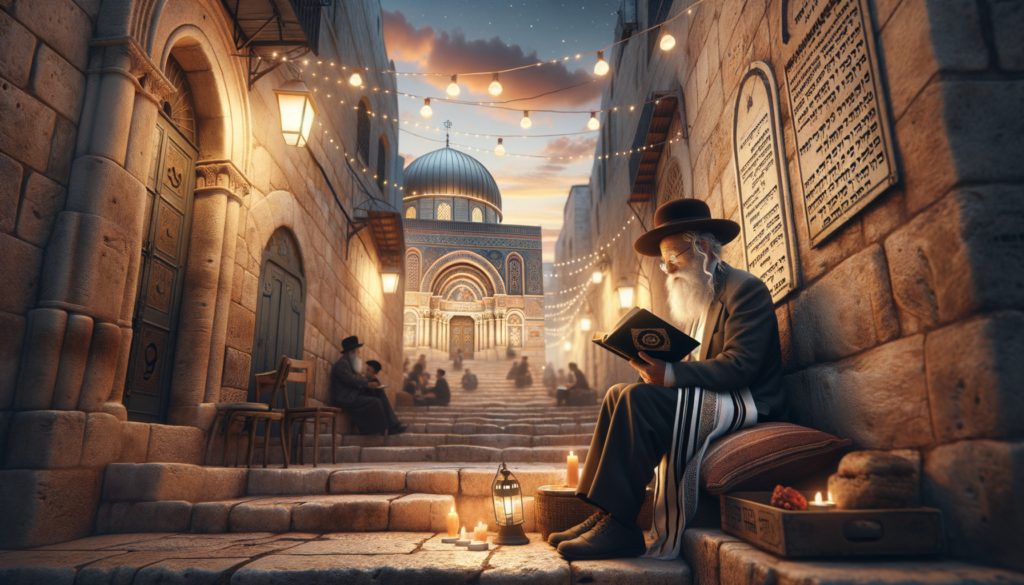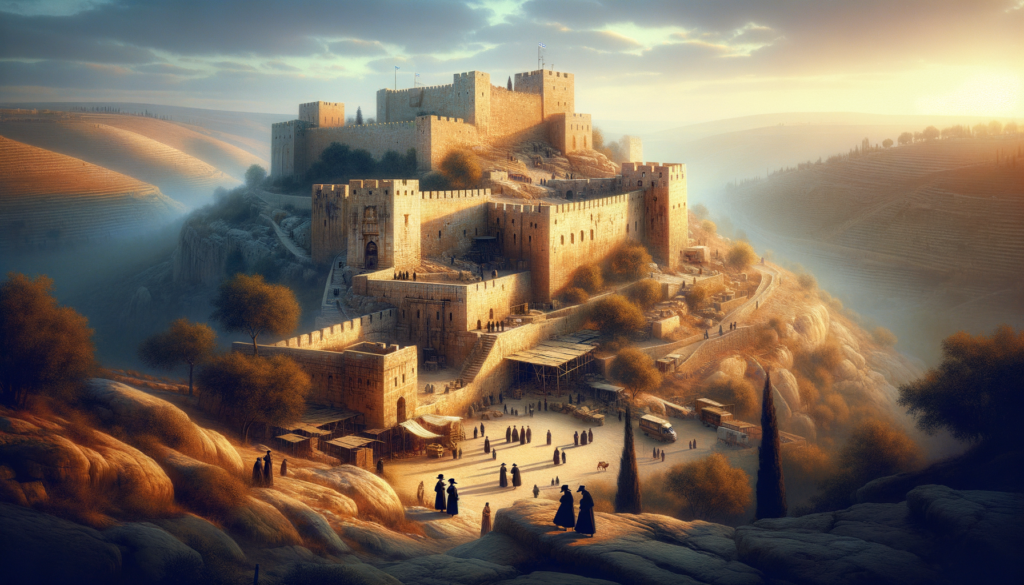Zion and Jerusalem: Exploring the Heart of the Holy Land

For anyone who cherishes the stories of the Hebrew Bible, the names ‘Zion’ and ‘Jerusalem’ evoke a deep sense of connection and heritage. They are often spoken in the same breath, painting a picture of a sacred, golden city. This brings a thoughtful question to mind: are they simply two names for the same place? While they are deeply intertwined, these two names began their journeys with distinct geographical and historical identities. To truly appreciate the richness of these terms, one must travel back in time, exploring the ancient hills and narratives of the Tanakh. Join us as we uncover the beautiful story of how one small part of a city came to represent its very soul, a story that you can still trace today in the landscapes of Israel.
Our story begins not with a grand city, but with a strategic, fortified hill. The earliest mentions in the Tanakh identify Zion as a specific stronghold belonging to the Jebusites, one of the peoples inhabiting the land. The Second Book of Samuel (5:7) provides a clear geographical and historical anchor: ‘Nevertheless, David captured the fortress of Zion, which is the City of David.’ This was a pivotal moment. Geographically, this fortress was located on the southeastern hill of the area that would later be known as ancient Jerusalem. It was chosen for its defensibility, with deep valleys on either side. So, at its very origin, Zion was not Jerusalem; it was a vital, fortified nucleus within it. This foundational distinction is the key to understanding how the meanings of both names would beautifully evolve and merge over centuries.

After its capture, King David established Zion as his royal capital. It was the political and military heart of his unified kingdom. However, the significance of the name began to expand dramatically with the vision of his son, King Solomon. When Solomon constructed the First Temple on Mount Moriah, a hill adjacent to the original ‘City of David,’ the sanctity of this new structure began to influence the name. The name ‘Zion’ grew in scope to encompass this holy mountain as well. The Book of Psalms is filled with verses that celebrate this new, sacred identity. Psalm 48, for instance, exclaims, ‘Great is the Lord and greatly to be praised in the city of our Mighty One! His holy mountain, beautiful in elevation, is the joy of all the earth, Mount Zion, in the far north, the city of the great King.’ From a military stronghold, Zion was transforming into the spiritual epicenter of Jerusalem.
This expansion of meaning continued as the Temple’s importance grew. The name Zion, now synonymous with the holy Temple Mount, gradually came to represent the entire city of Jerusalem in a poetic and spiritual sense. It is in the beautiful, evocative language of the prophets and poets of the Tanakh that the two names truly become woven together. They began to use ‘Zion’ not just as a name, but as a term of endearment and reverence for Jerusalem as a whole. This allowed them to speak of the city not merely as a collection of buildings, but as a living entity with a unique spiritual character.
The Tanakh frequently uses the tender phrase ‘Daughter of Zion’ (Bat Tzion). This is a powerful example of personification, where the writers address the city as a beloved woman. This term, found in books like Isaiah, Jeremiah, and Zechariah, refers not to the stones of the city, but to its inhabitants—the collective community of Israel. It casts Jerusalem in the role of a mother figure, and its people as her cherished children, highlighting the deep, familial bond between the people and their spiritual homeland.
During the periods of hardship and exile described in the Tanakh, the name Zion took on its most powerful symbolic role. For the people forcibly removed from their land, Zion was more than a memory of a place; it was the embodiment of their hope for return and restoration. The famous and heart-wrenching Psalm 137 begins, ‘By the rivers of Babylon, there we sat down and wept, when we remembered Zion.’ Here, Zion represents everything they had lost: their home, their freedom, and their spiritual center. The prophets, in turn, used Zion as a beacon of hope, promising a future where the people would be gathered back to their land. It became a symbol of resilience and the enduring connection between the people of Israel and their ancestral homeland, a promise that transcended physical distance.
In conclusion, while Zion and Jerusalem are not geographically identical in their origins, their stories are inseparable. Zion began as a specific fortress, the ‘City of David,’ and grew to encompass the Temple Mount. From there, its meaning blossomed in the hearts and writings of the prophets and poets, becoming a cherished, spiritual name for all of Jerusalem and a powerful symbol for the entire nation. Understanding this beautiful evolution from a physical place to a profound idea enriches every story in the Tanakh and deepens the connection one feels to the history-laden landscapes of Israel.
Zion and Jerusalem in Later Biblical Books
Later biblical writings such as those of Isaiah, Micah, and Zechariah expand the imagery of Zion and Jerusalem even further. For Isaiah, Zion is the place from which divine teaching will spread to all nations. Micah envisions Zion as the mountain of peace, where weapons of war are transformed into tools of agriculture. Zechariah speaks of Zion rejoicing at the coming of a humble king, a prophetic image layered with messianic meaning. These passages demonstrate how the relationship between Zion and Jerusalem grew from geography into theology and eschatology.
Zion and Jerusalem in Rabbinic and Post-Biblical Thought
In rabbinic literature, Zion and Jerusalem become central motifs of Jewish longing and devotion. The Talmud often references Zion when discussing the Temple and divine presence. Liturgical traditions reinforce this memory, with prayers and festivals invoking the restoration of Zion. Phrases like ‘Next year in Jerusalem’ at the end of the Passover Seder epitomize how the concept of Zion transcended its geographical roots to become a symbol of hope, continuity, and faith across centuries of diaspora.
Zion and Jerusalem in Modern Jewish Identity
In modern times, the association of Zion with Jerusalem found new expression in the Zionist movement. Thinkers and poets reimagined Zion not only as a symbol of spiritual connection but also as a political aspiration—the reestablishment of Jewish sovereignty in the ancestral homeland. The very name ‘Zionism’ reflects the deep historical bond between the word Zion and the city of Jerusalem. Today, both terms are still invoked in political discourse, literature, and music as symbols of resilience, national rebirth, and spiritual belonging.
Cultural and Literary Echoes of Zion and Jerusalem
Beyond religious texts, Zion and Jerusalem resonate strongly in culture and the arts. Medieval poets like Yehuda Halevi wrote stirring verses about yearning for Zion. African American spirituals used ‘Zion’ as a metaphor for freedom, while modern reggae music often invokes Zion as a utopia of peace and justice. Contemporary Israeli songs continue this tradition, blending the historical and spiritual layers of meaning. Through literature, song, and art, Zion and Jerusalem have become universal symbols of hope and the eternal human search for a place of belonging.



